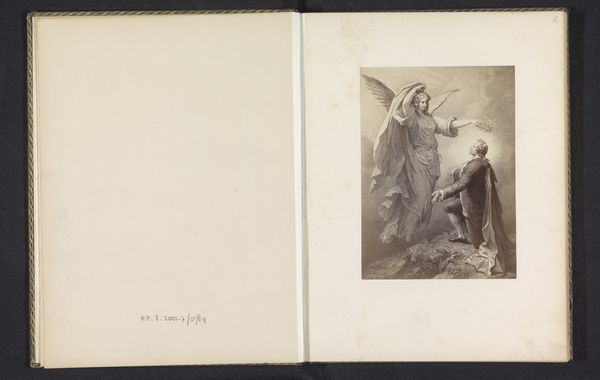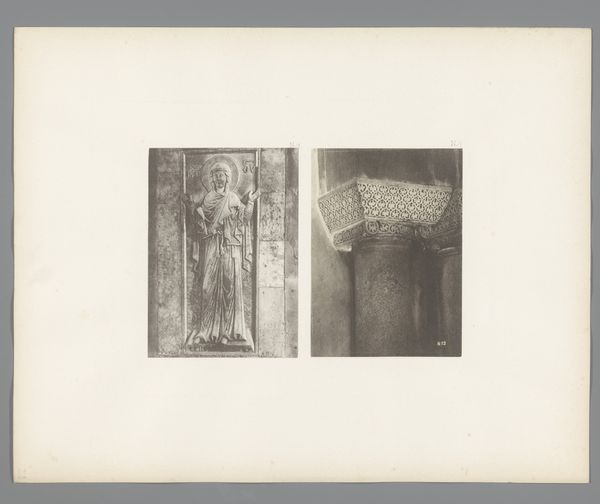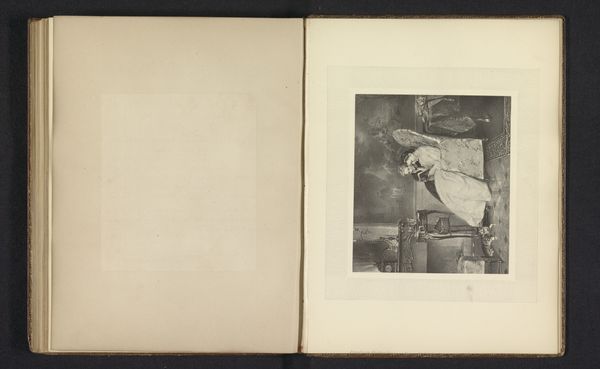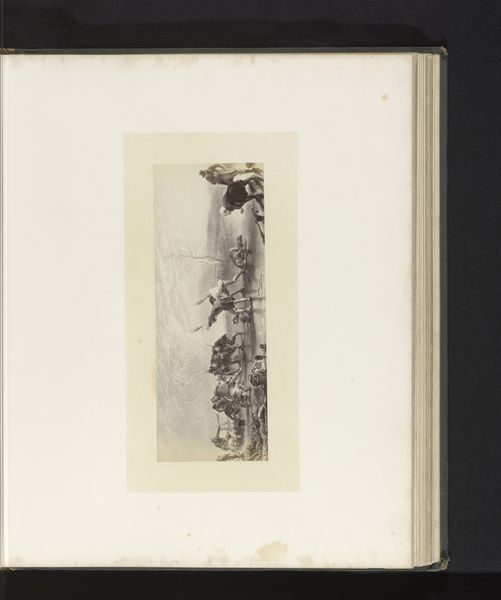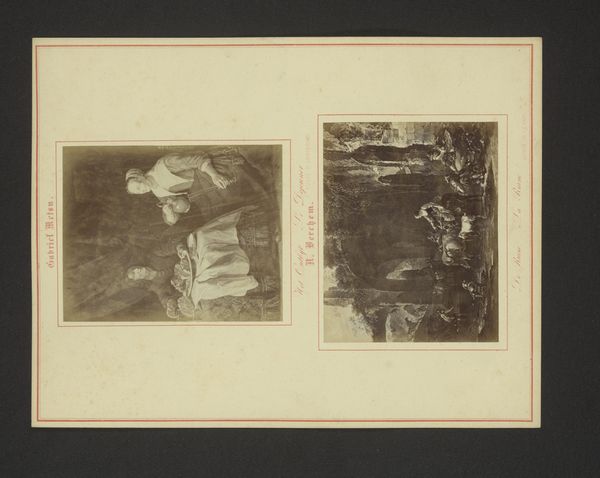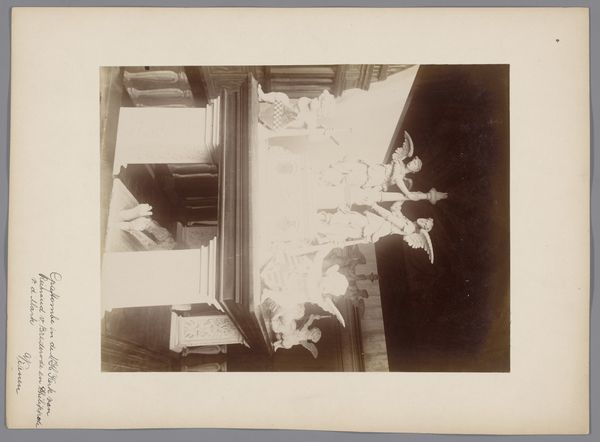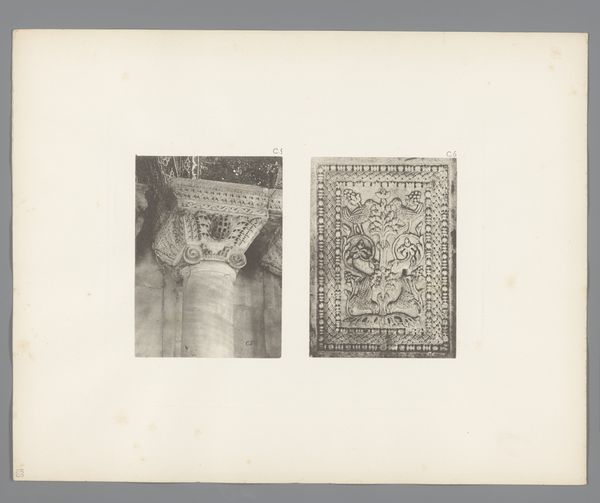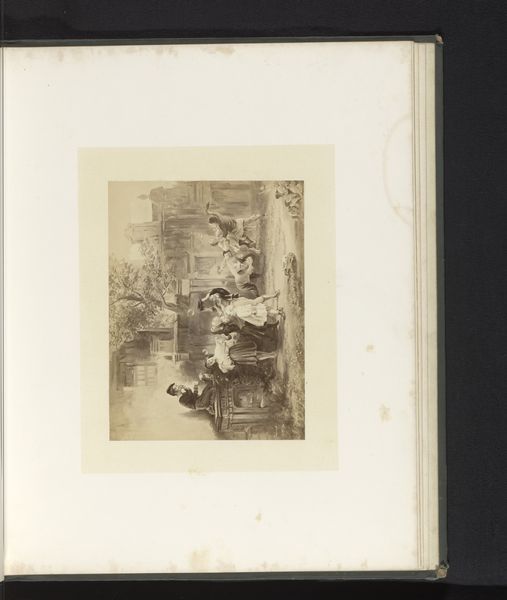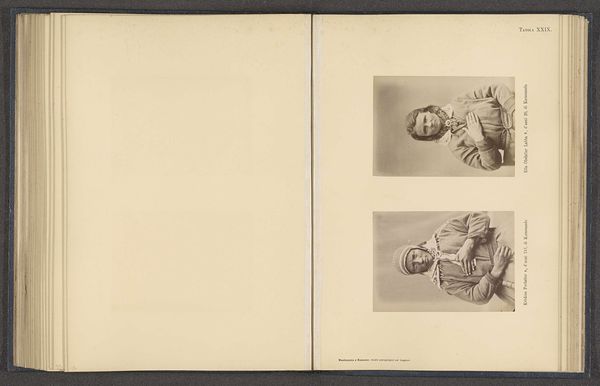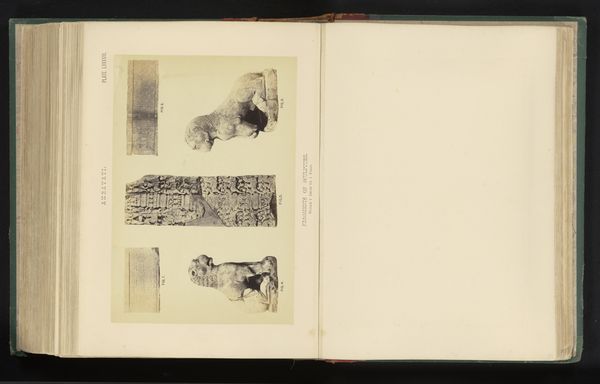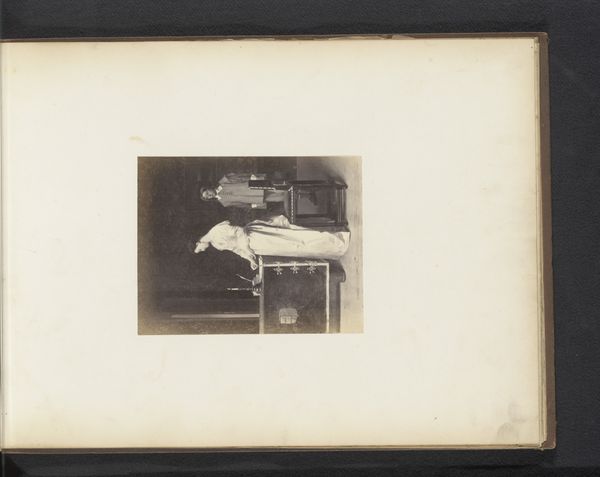
Twee afbeeldingen van sculpturen van engelen in de San Marco in Venetië before 1885
0:00
0:00
print, photography, sculpture
#
byzantine-art
# print
#
landscape
#
figuration
#
photography
#
geometric
#
sculpture
Dimensions: height 312 mm, width 395 mm
Copyright: Rijks Museum: Open Domain
Curator: I find the starkness quite beautiful. Editor: This print, "Twee afbeeldingen van sculpturen van engelen in de San Marco in Venetië," by Carl Heinrich Jacobi, presents two sculptural details within Venice's San Marco. Dating to before 1885, these angelic figures exude a certain somber quality through the photography and rendering of geometric elements. Curator: The high contrast accentuates their rigid postures. See how the light shapes a powerful chiaroscuro, focusing our eye on the detailed carvings of their garments and wings? I'd hazard these angels were intended to convey solemnity, their gazes seemingly directed towards an unseen, divine presence. Editor: Agreed, but their solemnity isn’t just aesthetic, but it points toward the socio-religious role of art within the context of places like San Marco. The art and architecture reinforced the power and piety of the Venetian state. How were such images then circulated and received in the 19th century? Curator: Well, photographic prints like these democratized access, enabling wider audiences to experience and contemplate the cathedral’s artistic treasures even if they could not physically journey to Venice. Editor: Exactly. Plus, I notice how the photographer meticulously captures the ornate details of each angel. Their geometric shapes, framing, wings—all seem intended to inspire awe and reverence among worshippers and those seeing such photographical records of these statues. Curator: It also strikes me how their Byzantine influence is visible through their rather frontal, stiff poses and idealized features, but it could also mean that their stylized portrayal was aiming to communicate theological messages efficiently. Editor: Fascinating—so, rather than simply capturing a likeness, Jacobi uses light and shadow to underline inherent meanings. Seeing these images presented as prints gives new understanding to what was possible with image dissemination, a critical piece of the monument’s history itself. Curator: Indeed. And by isolating these sculptures in photographic form, Jacobi invites us to contemplate them beyond their architectural context, underscoring not only formal qualities but also symbolic power embedded in religious representation.
Comments
No comments
Be the first to comment and join the conversation on the ultimate creative platform.
